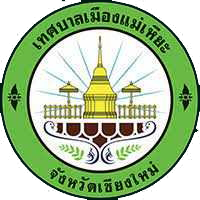Articles
บทความป่าในเมือง : สวนพฤกษศาสตร์แม่เหียะ

ลักษณะความเป็นเมือง 2 ฝั่งของเมืองแม่เหียะ ที่โดดเด่นและแตกต่างจากเมืองอื่นๆ คือ การมีพื้นที่ 1 ฝั่งคิดเป็นพื้นที่ร้อยละ 49 ของพื้นที่ทั้งหมด เป็นพื้นที่ป่า พื้นที่สีเขียวเพื่อการนันทนาการ และที่สำคัญเป็นพื้นที่แปลงใหญ่ มีกิจกรรมและสิ่งอำนวยความสะดวกหลากหลาย ให้ได้ใช้ประโยชน์ในสารพัดแง่มุม ไม่ว่าจะเป็น เพื่อการออกกำลังกายหนัก อย่างการวิ่ง การปั่นจักรยาน เต้นแอร์โรบิก สเกตบอร์ด หรือพื้นที่นันทนาการอย่าง การเดินเบาๆ นั่งเล่นพักผ่อน อ่านหนังสือ เล่นว่าว และปิคนิค เป็นพื้นที่ที่โอบรับแทบจะทุกกิจกรรมและเหมาะสมกับทุกช่วงวัย ศักยภาพที่ไม่สองรองใครเช่นนี้ เกิดมาจากการวางนโยบาย การพัฒนา และการมีส่วนร่วมที่ทั้งภาครัฐ ท้องถิ่นและประชาชนในพื้นที่ร่วมกันคิด ออกแบบ และลงมือทำ ..บทความนี้จึงหยิบยกหนึ่งตัวของพื้นที่สีเขียวในพื้นที่เมืองแม่เหียะมาให้ทุกคนได้รู้จัก และอยากเชิญชวนไปใช้บริการ พร้อมกับช่วยกันส่งเสียงชื่นชม และให้คำแนะนำในการพัฒนาพื้นที่แบบเช่นนี้ต่อไปในอนาคต
ป่าในเมือง (Urban Forest)
แนวคิดป่าในเมืองของตะวันตก ได้ให้นิยามไว้ว่าป่าในเมืองเป็นส่วนหนึ่งของการป่าไม้ในเมือง (urban forestry) ที่ว่าด้วยการจัดการต้นไม้ในเมืองทั้งแบบมีการวางแผนอย่างเป็นระบบ การบูรณาการศาสตร์ต่างๆ ของการจัดการต้นไม้ในเขตเมืองที่คำนึงถึงคุณลักษณะพื้นฐาน ปัจจัยด้านสังคม คุณภาพชีวิตของประชาชนที่อาศัยในเขตเมือง ผ่านการมีส่วนร่วมของประชาชนที่อยู่อาศัย [Carter, 1995]
สำหรับประเทศไทย แนวคิดป่าในเมือง เป็นแนวคิดกว้างกว่าพื้นที่สีเขียว (Green Area) หรือสวนสาธารณะ (Public Park) โดยเห็นเด่นชัดในเรื่องของการจัดการสภาพแวดล้อมของพื้นที่ ทั้งในเรื่องของการจัดการต้นไม้ การจัดภูมิทัศน์และระบบนิเวศที่เน้นความยั่งยืนและการจัดการตนเองของ-ป่า-ธรรมชาติ ซึ่งสามารถมองเห็นได้ชัดเจนเมื่อเทียบกับสวนสาธารณะโดยทั่วไป
ป่าในเมือง จึงกลายเป็นนิยามของสวนป่าที่ปล่อยให้เกิดการเติบโตและยั่งยืนเกือบเป็นธรรมชาติสมบูรณ์แบบ โดยมีการดูแลจัดสรร และมีพื้นที่ตั้งอยู่ในพื้นที่เมืองหรือติดกับเขตเมือง
สำหรับพื้นที่เมืองแม่เหียะ มีพื้นที่ป่าในเมือง 2 แห่งคือ สวนพฤกษศาสตร์แม่เหียะ และพื้นที่ป่าในเมือง ดูแลโดย หน่วยพิทักษ์อุทยานแห่งชาติดอยสุเทพ-ปุย ที่ ทป.4 บทความนี้จะกล่าวถึง สวนพฤกษศาสตร์แม่เหียะ (Mae Hia Botanical Garden) ก่อนโปรดติดตามอ่านเรื่องราวป่าในเมืองแห่งที่ 2 ได้ในบทความชื่อ 5 พื้นที่สีเขียวแอคทีฟ @เมืองแม่เหียะ ใครที่ผ่านไปมาผ่านถนนหน้าเชียงใหม่ไนท์ซาฟารี คงจะคุ้นตากับถนนสายเล็กเบี่ยงซ้ายเบนหน้าลงใต้ไปหมู่บ้านหนองควาย ด้วยความร่มรื่น และบรรยากาศแสนรื่นรมย์โดยเฉพาะช่วงเช้า (ช่วงเย็นรถจะเยอะสักหน่อย) ชวนให้ลงถนนไปวิ่ง หรือปั่นจักรยานชิลๆ สักเที่ยว พื้นที่ป่าเล็กๆ ที่มีถนนสายน้อยผ่ากลางแห่งนี้มีชื่อว่า สวนพฤกษศาสตร์แม่เหียะ เดิมชื่อสวนพฤกษศาสตร์วรรณคดีภาคเหนือ และสวนพฤกษศาสตร์วรรณคดีแม่เหียะ ตั้งขึ้นในปี พ.ศ. 2530 มีพื้นที่ราว 1,000 ไร่
โดยเจ้าภาพหลักในขณะนั้นคือ สำนักงานปลัดกระทรวงเกษตรและสหกรณ์ จัดสร้างขึ้นเพื่อเฉลิมพระเกียรติพระบาทสมเด็จพระเจ้าอยู่หัว เนื่องในวโรกาสทรงพระเจริญพระชนมพรรษาครบ 60 พรรษา ก่อนจะมอบให้อยู่ในความรับผิดชอบดูแลของกรมป่าไม้ และกรมอุทยานแห่งชาติ สัตว์ป่า และพันธุ์พืช และได้มีการจัดสรรพื้นที่ส่วนใหญ่จัดสร้างโครงการเชียงใหม่ไนท์ซาฟารี
ปัจจุบันสวนพฤกษศาสตร์แม่เหียะ (ป่าในเมือง) ยังคงเปิดดำเนินการและเข้าร่วมในโครงการป่าในเมือง “สวนป่าประชารัฐ เพื่อความสุขของคนไทย” ของรัฐบาล ในการดำเนินงานจึงเน้นกิจกรรมป่าในเมือง กิจกรรมการเรียนรู้การเพาะชำกล้าไม้ กิจกรรมศึกษาความรู้ด้านพรรณไม้ กิจกรรมศึกษาการทำพรรณไม้แห้ง (Herbarium) กิจกรรมปลูกเสริมป่าธรรมชาติธรรมชาติ กิจกรรมออกกำลังกาย (เดิน วิ่ง และปั่นจักรยาน) และกิจกรรมสร้างสรรค์ต่างๆ ที่เกี่ยวข้องกับป่า และองค์ความรู้ด้านการอนุรักษ์พรรณไม้
- เว็บไซด์ สวนพฤกษศาสตร์แม่เหียะ (https://www.dnp.go.th/botany/garden/gardendetail.html?id=16011&lat=18.740464032&lng=98.912960595)
Urban Forest Part 1: Mae Hia Botanical Garden
The characteristic ‘two sides’ of Mae Hia City is an outstanding and unique feature compared to other cities. On one side, the area accounts for 49% of the total forested, green space and recreational area and, most importantly, large plot area. There are a variety of activities and facilities useful in many aspects, be it for intense exercise such as running, cycling, aerobics, and skateboarding, or recreational areas for jogging, lounging, reading, kite-flying, and picnics. These areas embrace almost all activities and are suitable for all ages.
The potential here is second-to-none, arising from formulation of policy, development, and participation by both the public sector, locals and residents in the area, who come together to think, design and do. This article focuses on one of Mae Hia’s green areas in particular, so that more may know and be invited to visit, and subsequently spread praise and advice regarding development of other such areas in the future.
Urban Forest
A concept for the west side, urban forests are defined as part of urban forestry, which concerns the systematic and planned management of urban vegetation and integration of various sciences of tree management in urban areas which takes into account basic characteristics, social factors, and quality of life of people living in urban areas through participation of the housing public [Carter, 1995].
For Thailand, the urban forest concept is a broader concept than that of green areas or public parks, which is clearly visible in the management of the area’s environment, both in terms of tree management, landscaping, and ecosystems that emphasize sustainability and self-management of wild-nature, and is clearly visible compared to general public parks.
Urban forests have therefore become defined as forest plantations which permit almost entirely natural growth and sustainability, with care taken to allocate or create such areas within or adjacent to urban zones.
In Mae Hia, there are two main forested areas: Mae Hia Botanical Garden, and the other forested areas contained within the city, supervised by Doi Suthep-Pui National Park Protection Unit at Thor Por 4.
This article discusses Mae Hia Botanical Garden. Please read and follow the story of the second urban forest in the article entitled “5 Active Green Areas @ Mae Hia City”.
Anyone that passes along the road in front of Chiang Mai Night Safari may be familiar with the small road turning left and heading south towards Nong Kwai Village. The shaded and pleasant atmosphere, especially in the morning (there are lots of cars in the evening), invites one to jog along the road or take a relaxing bike ride. A small forested area, through the middle of which runs a small road, is named Mae Hia Botanical Garden, formerly known as the Northern Botanical Garden of Literature and Mae Hia Botanical Garden of Literature. Established in 1987 and covering an area of approximately 1,000 rai, with the main administrator at that time being Office of the Permanent Secretary, Ministry of Agriculture and Cooperatives, it was built in honor of His Majesty The King on the occasion of His Majesty The King’s 60th Birthday Anniversary, before responsibility was transferred to the Royal Forest Department and Department of National Parks, Wildlife and Plant Conservation, and the majority of the area was allocated to the Chiang Mai Night Safari project.
Mae Hia Botanical Garden (urban forest) is still in operation and participates in the Urban Forest Project “Pracharat Forest Park for the happiness of the Thai people”, a government initiative. Accordingly, the focus is on forest-based activities in the city, including knowledge of planting, study of plant species, study of dried plants (herbarium), natural forest-enhancement, exercise activities (walking, running, cycling), creative activities related to the forest, and knowledge of tree conservation.
- Mae Hia Botanical Garden website (https://www.dnp.go.th/botany/garden/gardendetail.html?id=16011&lat=18.740464032&lng=98.912960595)









